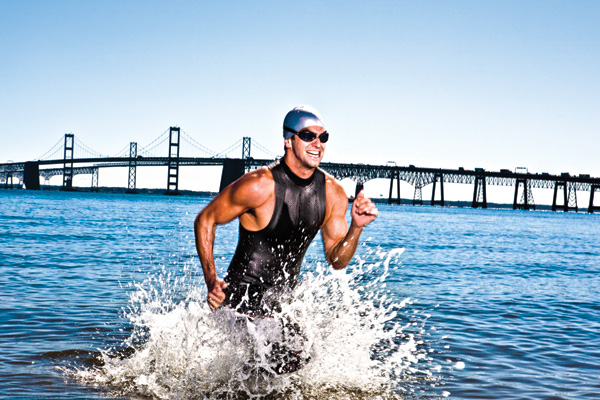
You’ve put in all the hours of hard training in the pool, on the bike and on the road. You’ve tapered perfectly and eaten all the right foods to guarantee your muscles are firing on all cylinders on race day. But you need to do more. That’s because there are so many potential problem scenarios during a triathlon that all your hard work can be undone by not taking the right course when an obstacle arises. Here’s my advice on overcoming the make-or-break moments we all have to face.
Start safe
The first few minutes of a triathlon are more like a mass underwater brawl than the start of a normal race so if this worries you, start to the side of the main pack where there are less people to knock you about. Once you've got a few hundred metres under your belt, your confidence will grow and you'll feel more comfortable about brushing up against other racers.
Stay on course
It’s tempting to keep your head still and concentrate on breathing while swimming. But you need to look up every six to eight strokes to ensure you're swimming in the right direction. Failing to take the direct line between the buoys means you’ll have to swim further, putting a dent in your hopes of a PB.
Nail the transitions
A triathlon actually consists of four disciplines, not three, because of the two transitions. It’s easy to overlook this aspect of a race while focusing on your main training, but smart preparation will help you transition quickly and effectively so you don’t lose any momentum from the swim and bike. Scout the entrances and exits in advance and have all your kit ready laid out, marking your spot with a bright, over-the-top towel so you spot it easily. It’s easy to panic in the two transition zones, especially if you are desperate to make up lost time but keep focused, do one job at a time and get racing again sooner.
Refuel on the bike
Don’t get caught short of energy during the run. It’s easier to take on water and calories while riding, so make the most of this stage to refuel and rehydrate to keep your energy levels topped up. Carry water and energy and drinks on your bike and tape energy gels to your frame so you’re not faffing about in the first transition. Your legs will thank you for it once you start running. Just ensure you have tried the energy products in training first – you don’t want to risk consuming anything that might disagree with you.
Don’t quit
It’s common to hit a point when you think your body can’t go on, but dig deep. Once you stop, you release chemicals and hormones that are responsible for the recovery process, so starting up again becomes that much harder. If you’re really struggling slow down a little, get your breath back, take on some fluid and energy and keep on going. Chances are you’ll get a second wind.
For more expert training advice, subscribe to MF - we'll give you five issues for £5.
Download a digital version of the latest issue from iTunes.
Get the Coach Newsletter
Sign up for workout ideas, training advice, reviews of the latest gear and more.
